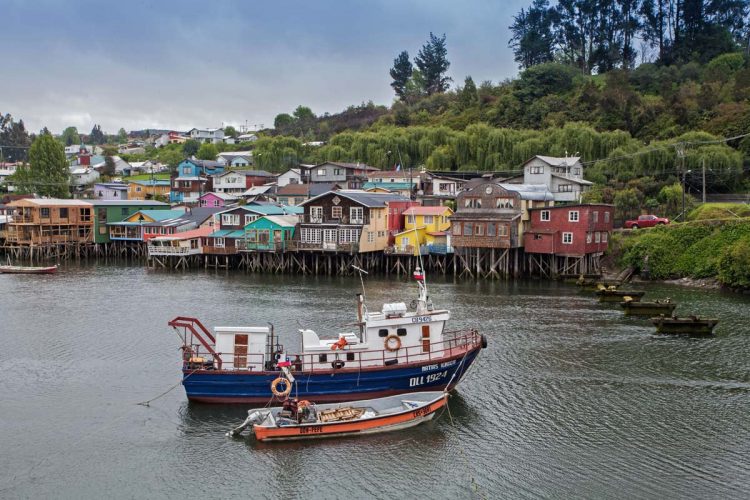
The farm woman selling the orange and pink hand-knit dolls at the farm market in Castro, on Chiloé Island, is trying to tell me where she gets her wool. I’m trying to answer, and we’ve hit a dead end.
We’re both speaking Spanish. After all, Chiloé, a remote group of islands off the coast of Puerto Montt, belongs to Chile. But we might as well be shouting in the wind.
“She’s says the wool comes from her sheep and she spins it herself,” says Rodrigo Guridi, appearing at my elbow.
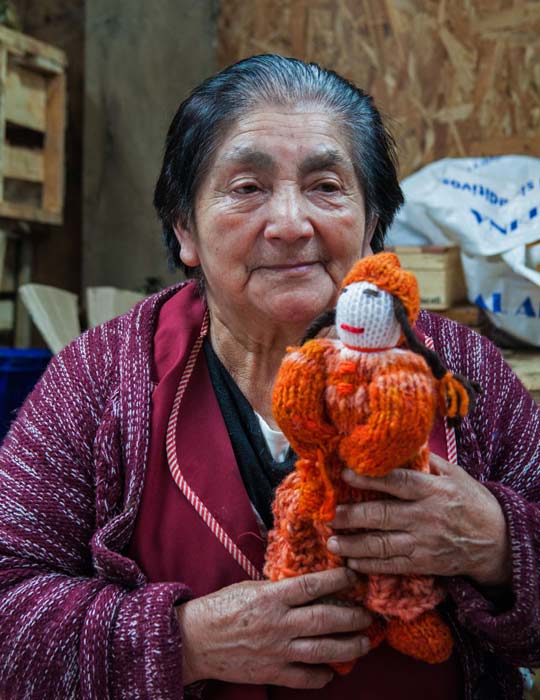
A guide and long-time resident of Chiloé, Guridi had already unraveled a couple of mysteries for me and Steve, explaining that Chiloé’s unique culture – people, language, farming and fishing – is the result of more than three hundred years of isolation.
“You’ll have to stay longer if you want to pick up the accent,” he tells me, with a hint of I-told-you-so. We need at least two weeks to see what makes Chiloé (CHEE-low-way) a true one-off, unlike any place we’ve been before.
The next time you visit, come in autumn – March and April in the southern hemisphere – after summer vacation ends, he says. Local tourists have gone home, and the leaves turn red and yellow. Now he tells me, I’m thinking, wondering what comes next.
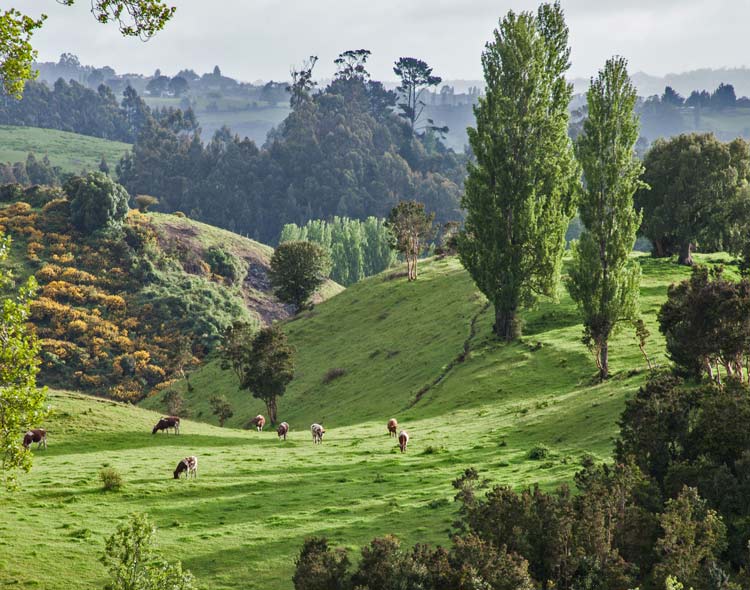
Chiloé
Things are seldom what they seem here in middle earth, Chile’s little-known step-child, Chiloé is a cluster of green hills rising out of the southern Pacific Ocean. Skim milk doesn’t masquerade as cream, exactly, and hobbits are thin on the ground.
But as the growing number of foreign travelers touring this 40-island archipelago, at 42 degrees south, west of the Gulf of Ancud, have discovered, every day brings a new surprise in Chiloé.
After a two-day stop-over in Santiago, Chile’s capital city, where Salina, a new friend and movie fan, said Chiloé reminded her of “the shire,” I wasn’t sure what we’d find. Images of dry heat and a scrubby, rocky landscape, something like Argentina’s pampas, wouldn’t go away.
But I saw what she meant once we reached our hotel, the Parque Quilquico, perched on a bluff overlooking a long, blue bay.
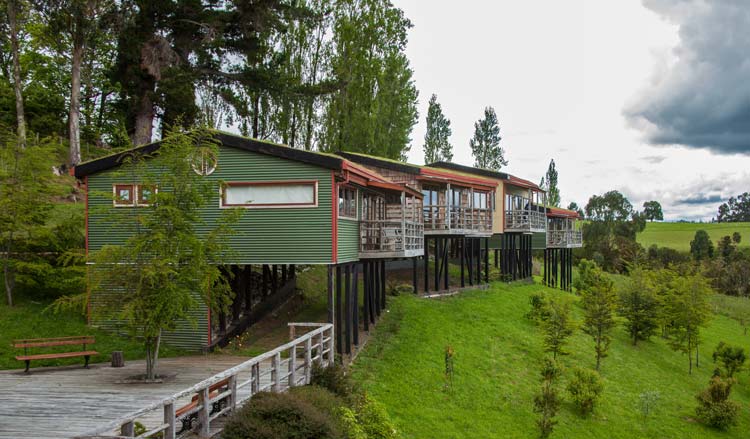
“Oh, look! It’s breathtaking,” gushed the woman who’d shared our cab from the airport. Beyond the windows lay a wonderland of rolling hills, grassy meadows, leafy trees and half-hidden vales sloping down to the sea. A dozen brown and white cows grazed in the foreground, enjoying the last warm days of summer. Only the hobbits were missing.
“It’s so familiar,” she said, sinking down onto the sofa, her expectations ajar. “I know this is Chile, but I feel as if I’m somewhere else, in Vermont or England.”
Or Vancouver or Seattle. Why, I wondered, did such an inviting and eminently livable place go unnoticed for so long? With navigable bays, a sea full of fish, rich farmland, dependable rain and a temperate climate, Chiloé could be a major Pacific port.
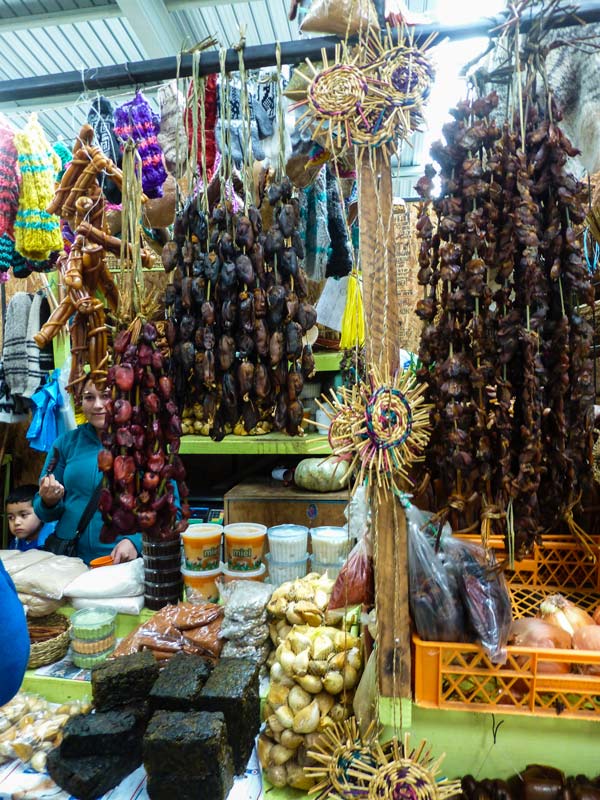
Farmer’s Market in Chiloé
The next morning, we headed to the farm market, always an unfailing opportunity for colorful photo-ops. The usual fresh farm produce, raised locally, was a vegetarian’s delight: cabbages, lettuce, tomatoes, onions, carrots, apples, purple, yellow and white potatoes, and honey, breads, fish and cheese. The same wool that made my doll, reappeared as nubby, grey and brown shawls, hats, socks and blankets.
But what in heck were those ugly dried lumps suspended on long strings, and the dark-green bricks, and the jars full of stringy stalks? And the muddy-colored, folded leather things?
I’ve said yes to some strange edibles in my time – grilled warthog and seal oil-ice cream among them – but this food, if it was food, looked like expired army field rations.
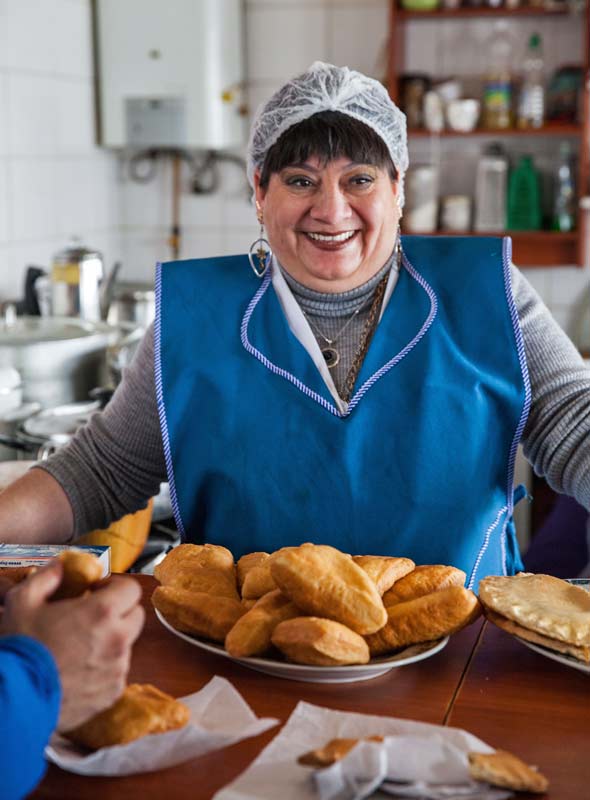
Once again, Guridi stepped up with answers. The foods on the strings were smoked, dried sea squirts, weird marine creatures pried out of rocks at low tide; and two kinds of smoked mussels.
The stalks that looked like sugar cane were the stems of the nalca plant, the so-called giant Chilean rhubarb, so large and healthy it looks carnivorous. The “bricks” were dried seaweed and the folded “leather” was bull kelp, leaves harvested from the sea, dried, folded into squares and tied together with the stems, Christmas gifts from Neptune.
“It’s the old way of doing things, so nothing would be wasted,” said Guridi. “If you wanted to survive on this island, you had to be ingenious.”
Chiloé History
It was an accident of history, a right turn at the right time, that shut Chiloé away from the world. After Spain conquered Peru, the conquistadors headed south, expecting to walk over Chile’s indigenous people.
But the war-like Mapuche tribes living south of the Bio Bio River, weren’t so easily pushed around. Whomping the Spaniards, they chased away the remaining settlers, a group of Spanish and Huilliche Indians, who fled from the mainland to Chiloé.
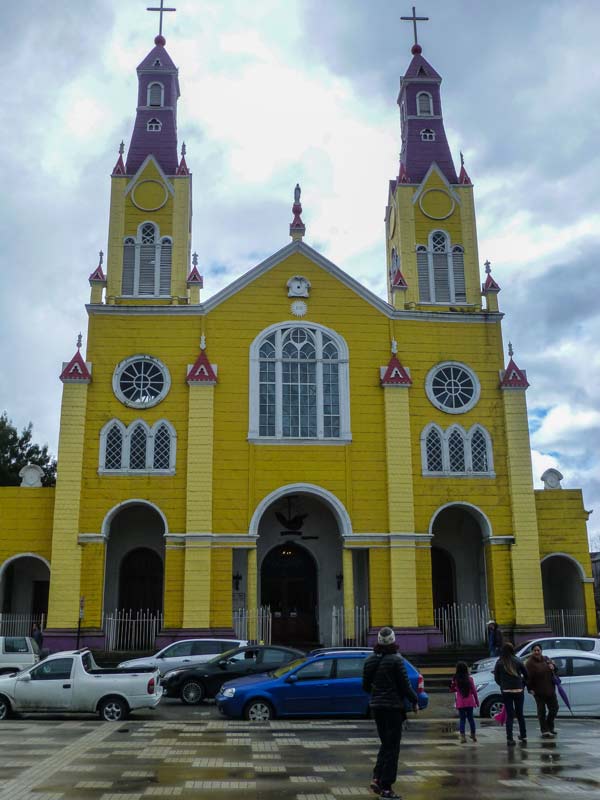
Alone on the island, the new arrivals intermarried, blending their cultures and creating today’s mostly mestizo population. Early on, Jesuit priests arrived, and traveling from one island to the next, encouraged the converts to build churches.
Over time, 70 were erected, each made entirely of wood joined by wooden pegs. Today, 17 of these exquisite expressions of primitive art have been designated World Heritage Sites and are Chiloe’s best known, most visited attraction.
The Jesuits, volunteers from a host of European countries, sketched architectural styles they remembered from home: neoclassical, baroque, gothic, and others. But the villagers who did the work were skilled boat builders.
“The Jesuits knew what a church should look like, but no one knew how to build one,” said Carlos Miranda, a guide at the Tierra Chiloe Hotel, who leads cultural tours of the islands. “What they did know how to build was boats,” he said, escorting us to the church in Rilan, to look at the ceiling, built “exactly like an upside-down boat.”
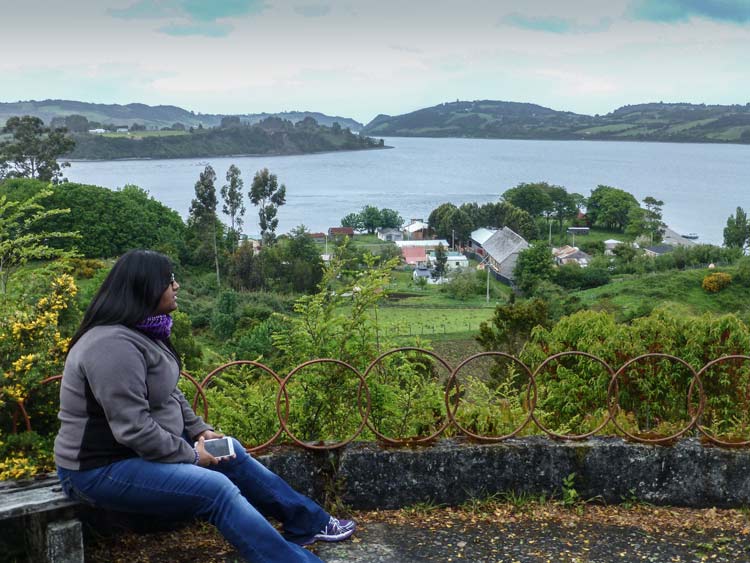
Chelin and Quehue
Motoring across the bay to Chelin and Quehue, two tiny outer islands, we stopped to inspect the bare bones of the Chelin Church, during a renovation, then anchored in the cove at Quehue, for two perfect hours of kayaking.
The churches are famous. But the signature buildings are the “palafitos,” ancient ramshackle wood houses built on stilts built over Castro’s bay. No could tell me why these houses, decorated like Easter eggs, weren’t built on dry land, but one guide thought they’d originally belonged to fishermen. With tidal variations as high as 23 feet, being over the water might keep a fishing boat afloat.

Birding in Chiloé
The same tidal variation, in fact, is why thousands of shallow wetlands and estuaries dot the east and west shores, making the islands a top birding destination. If I’d had my binoculars – and a passion for birds – I could have seen Magellanic and Humboldt penguins, Chilean skua, parasitic jaeger, Buller’s albatross, kelp goose, cinnamon teal, black-necked swans and Chilean Flamingoes.
Driving up and down roads that resemble roller coasters, I wondered if the hills are moraines and whether Chiloé was glaciated during the last ice age.
Chiloé National Park
Apparently so. Ice once entombed the island, except for a narrow strip now within Chiloé National Park. Despite another rainy day, we joined trained Naturalist Pablo Mansilla, a guide with Chiloetnico, a local tour company, for a nature walk through an old-growth rain forest in the southern-most sector.
Exhibits at the interpretive center near the entrance help to make sense of the park’s indigenous flora and fauna, many predating the last Ice Age. The brush in this forest was so tangled and thick and the ground cover so mossy and spongy that bushwhacking was literally impossible.
Thank goodness for the long loop of raised boardwalks that gave us a peek at the way it used to be, and answers to at least one of region’s many mysteries.
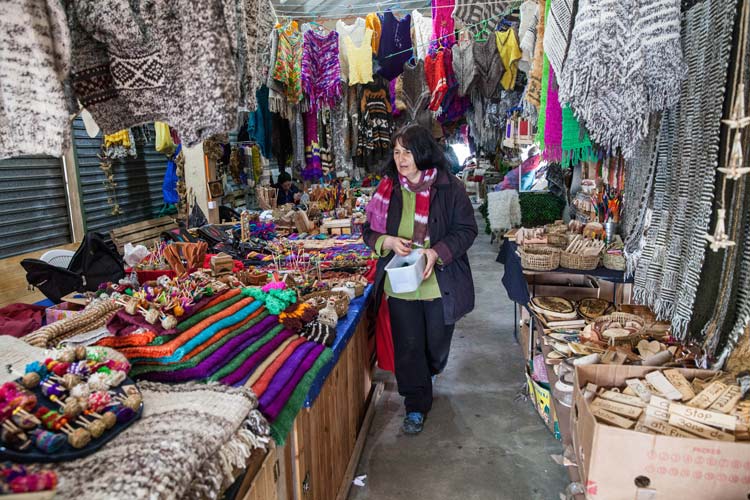
If You Visit Chiloé
Chiloé is a four-season destination. March and April, fall in the southern hemisphere, are good months to visit, after vacationing Chileans have gone home. The weather is warm, the colors are changing and hotel rates drop. Rain showers are frequent year around, except in winter when it may snow; bring a raincoat or parka.
Where to Stay in Chiloé
Hotels, inns and B&Bs are available in most price categories; see www.turismochile.travel. For a more deluxe experience, the top-ranked Hotel Parque Quilquico (www.hpq.cl) offers rustic luxury. The Tierra Chiloé (www.tierrachiloe.com) provides minimalist contemporary design. Both serve fine cuisine and offer room rates with or without meals, spa and massage services, swimming pool and fitness equipment, guided tours and outdoor recreation and airport transfers.
How to Get to Chiloé
LAN airline connections flies to Santiago from the U.S. with a stopover in Peru, then connects with a flight to Puerto Montt and on to Castrol. Other airlines flying to Santiago may include more stops and longer airport time.
Author Bio: Writer Anne Z. Cooke, a print and online journalist, lives the life of a gypsy, following the seasons from Los Angeles to Colorado’s Rocky Mountains. In between, she travels the world, covering everything from Arctic culture and wildlife conservation to English history and family cruising, looking for the best while pursuing the back story. A freelancer and correspondent for the Tribune News Service, her stories appear in travel and lifestyle publications in the U.S. and internationally.
- How to Renew a US Passport Quickly and Affordably - April 19, 2024
- 6 Reasons to Visit Portland, Maine (+ Travel Tips) - April 18, 2024
- Cruising with Discovery Princess on the Mexican Riviera - March 30, 2024
